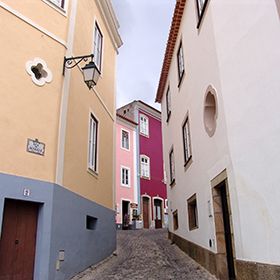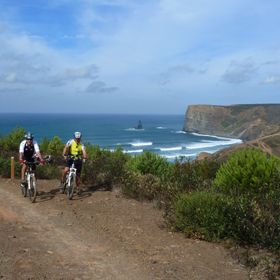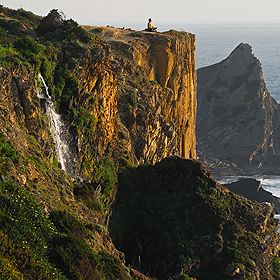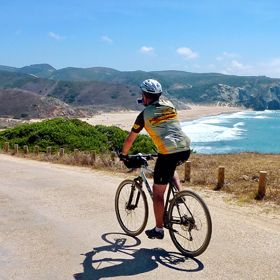Via Algarviana - Along the Algarve way

Discover a completely different Algarve – nestling in its green and peaceful hinterland are traditional villages and spectacular landscapes. How do you reach this world preserved from the past? Nothing could be easier… just follow the arrows!
Marked with signs and interpretive panels, this footpath is known as the “Via Algarviana” and runs across the region from east to west. The path has its origins in an old religious trail followed by pilgrims heading for the Sagres promontory, where the relics of St. Vincent were found. Running from Alcoutim, on the bank of the River Guadiana, to Cape St. Vincent, the 300-kilometre-long path is divided into 14 sections, each beginning and ending in places where its users can stop for lodging and refreshment. Everything has been planned so that hikers can adapt their journey to their own pace, or just choose the sections that interest them most. 
Photo: Monchique ©Via Algarviana
This trip into the heart of nature begins at the quay on the bank of the River Guadiana in Alcoutim and crosses over the Serra do Caldeirão, an area of cork production where you will find the delightful typical villages of Salir, Benafim and Alte. About halfway along its length, the path passes through São Bartolomeu de Messines and continues along the banks of the Ribeira do Arade, offering some truly beautiful views. Silves is another place that calls for a visit, before you head on to the Serra de Monchique, whose breathtaking panoramas are best admired from Picota or Fóia, the highest points in the Algarve. After crossing some almost completely untamed countryside, the path passes through the villages of Marmelete, Bensafrim and Barão de São João, and a forest of stone pines. You can already begin to smell the sea, and the Algarve Way finally reaches its end in the South-West Alentejo and Costa Vicentina Natural Park, Europe’s best preserved stretch of coastline.
Photo: Silves © José Manuel
All along the path, you can admire the beauty and aroma of the vegetation, which includes rosemary, lavender, fennel, thyme, rock rose, heather, and even orchids, although these are rarer. The trees and shrubs include arbutus, fig, carob and cork trees, as well as the almond trees that provide the raw material for the region’s delicious sweets and liqueurs. Rivers and streams help to keep you cool on hot days and are the natural habitat of otters, among other species of fauna. Part of this region belongs to the Natura 2000 network and you will see hares, wild boars and foxes, although it may prove more difficult to spot the few lynxes that also live here. The birdlife includes the brightly-coloured rufous bush robin and the bee-eater, but you may need a pair of binoculars and to look more closely if you are to observe the Bonelli’s eagle or the eagle owl, both of which prefer much higher terrain. 
Photo: Via Algarviana ©Robert Monnier
This is a region where the more traditional farming practices are still to be found, and you will see several windmills, threshing floors and community ovens. The traditional white lime-washed houses are all topped with the remarkably delicate and unmistakable lace-patterned Algarve chimney pots. The friendly and welcoming inhabitants of the villages you pass through continue to preserve the traditions of the rural world and are skilled at transforming what the land has to offer them into flavoursome food and drink – medronho (arbutus-berry brandy), liqueurs made from penny royal or almonds, honey, cheeses and sausages are just some of the produce that you should sample and take away with you. And look out for the local handicraft, pieces that are excellent souvenirs and testify to the skilled handiwork of the local people, including wickerwork, woven articles, pottery and so many other crafts. 
Photo: Via Algarviana ©Edgar Ribeiro
Are you ready to begin your journey? Fit yourself out in the right clothes, put on some sturdy footwear and don’t forget your compass or GPS, and other practical objects. Before setting off, consult the Via Algarviana website to obtain detailed information and… then get walking! Have a great trip!
































 Explore
Explore 
 Remember and Share
Remember and Share 


